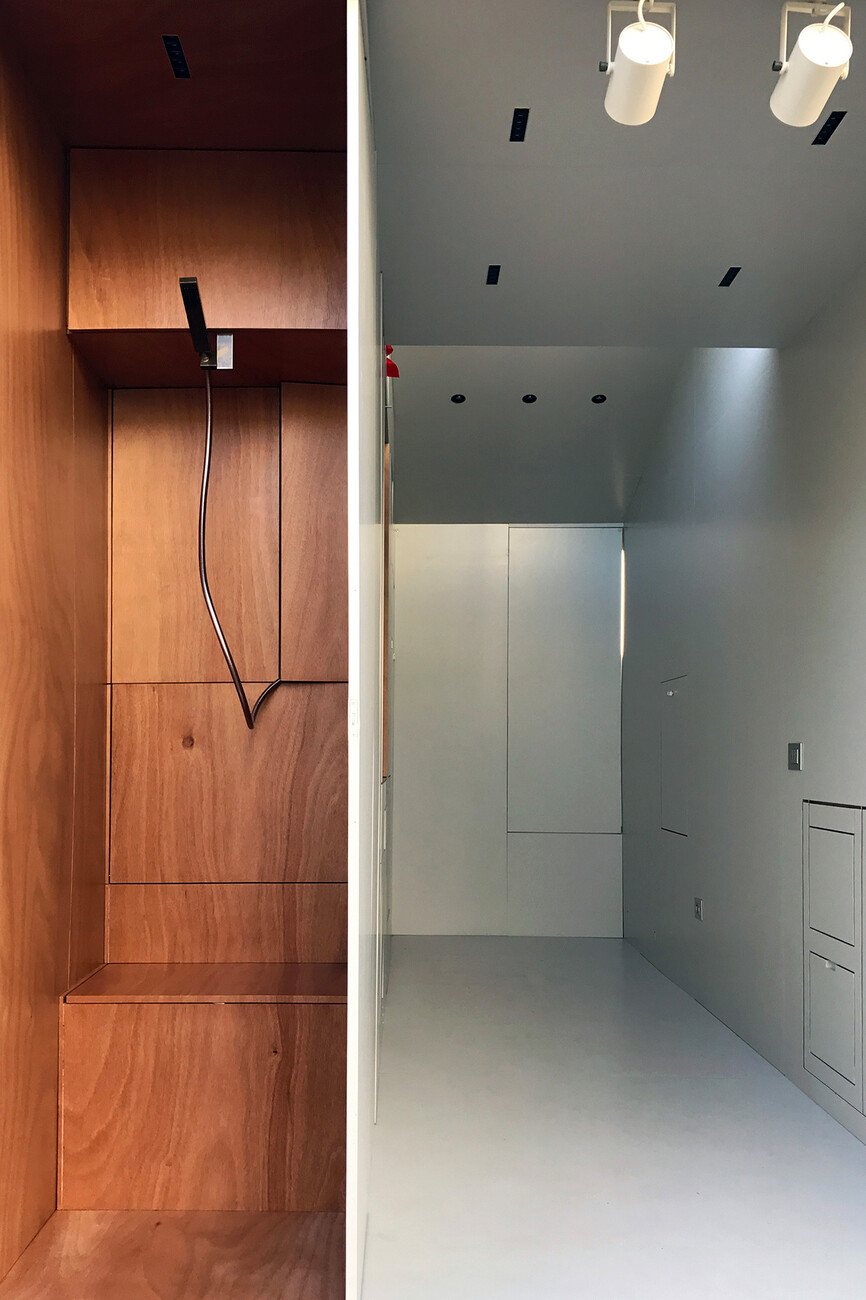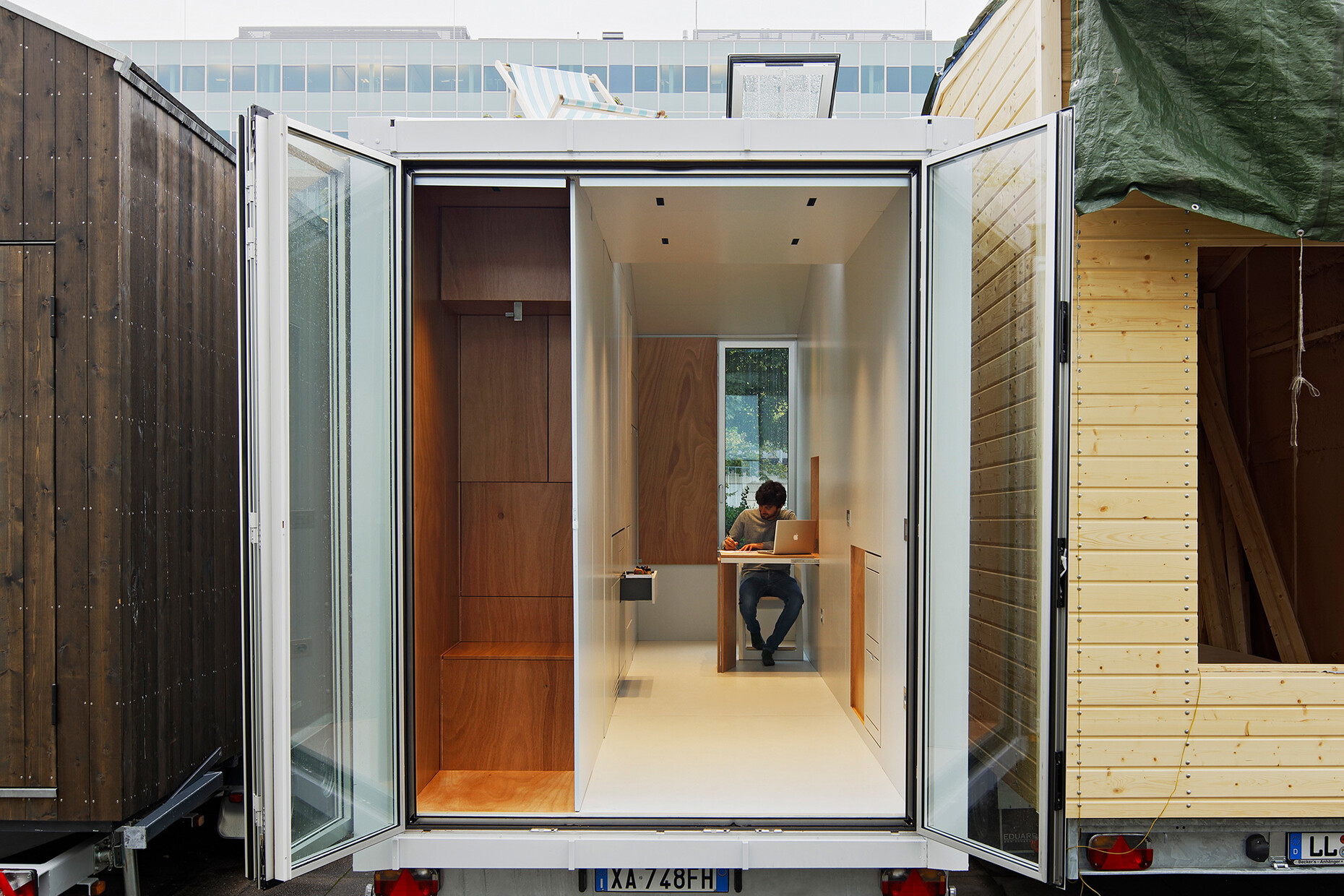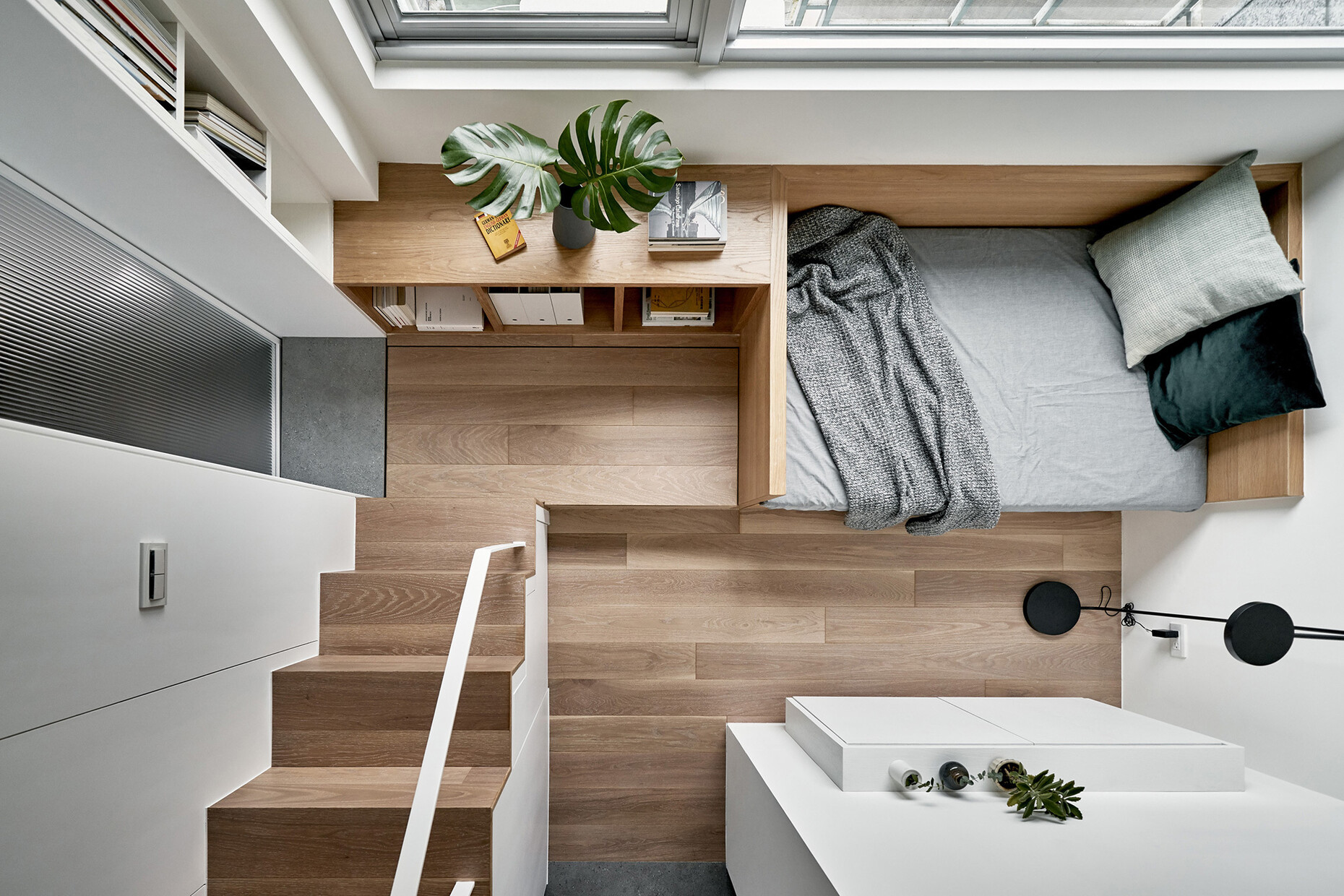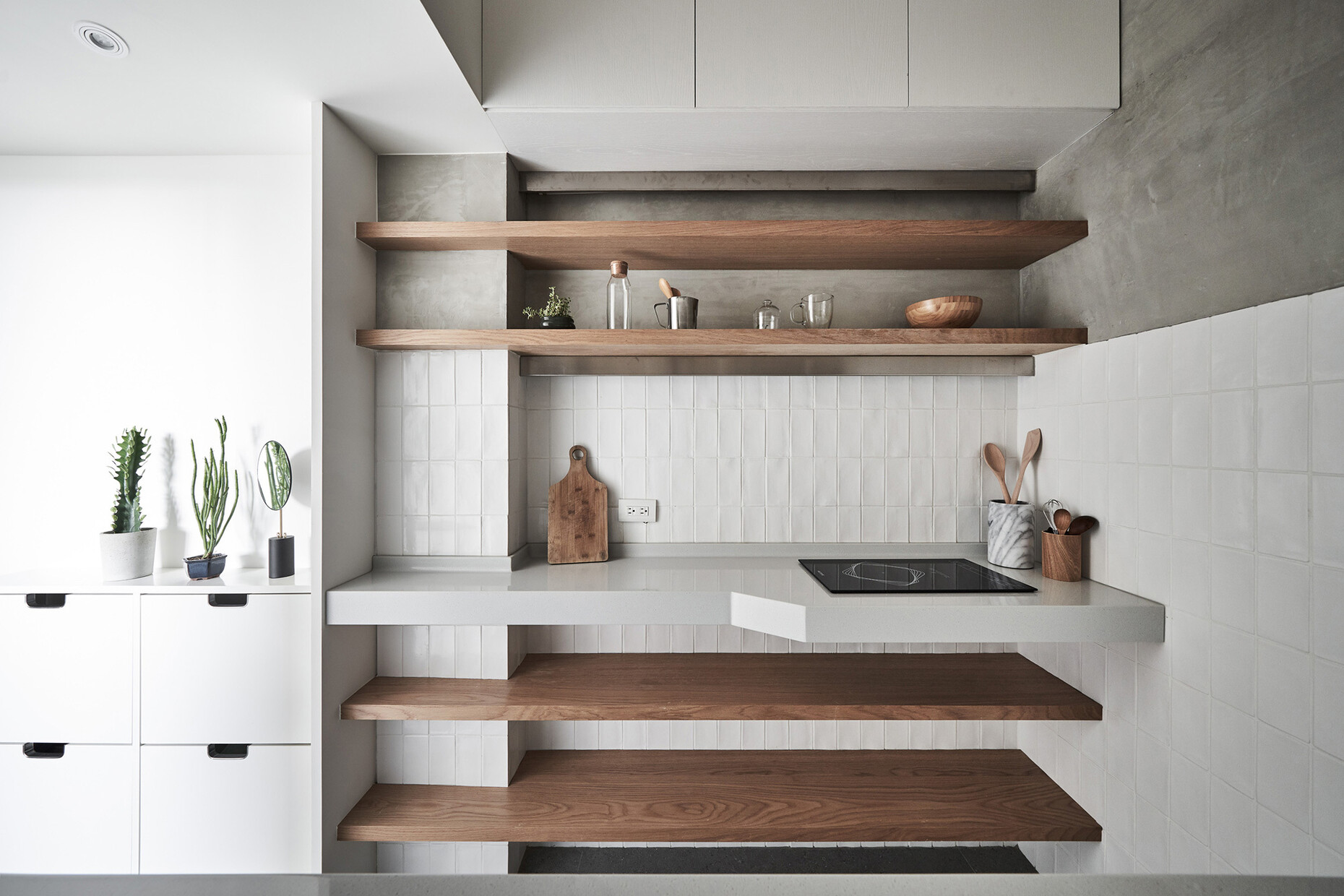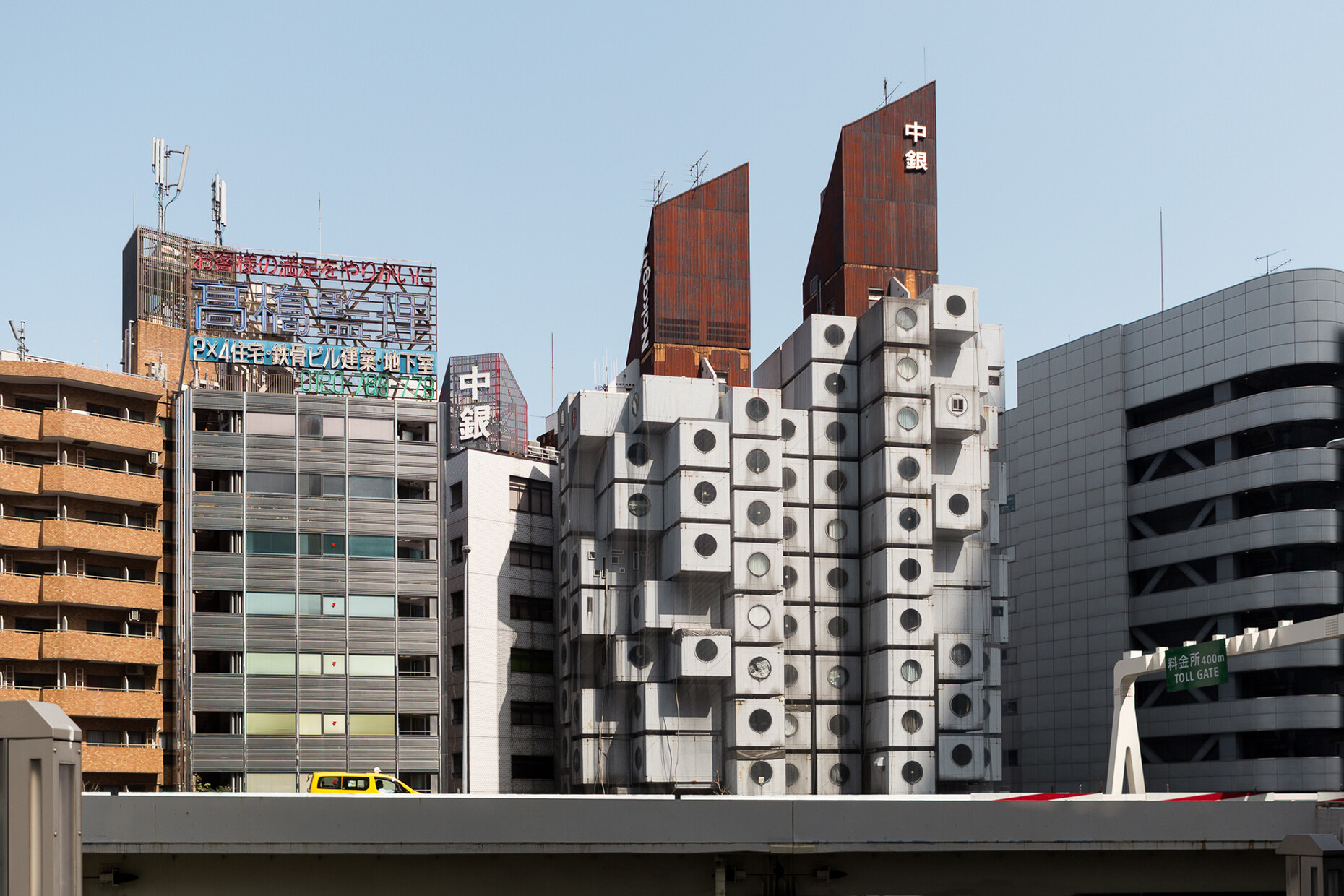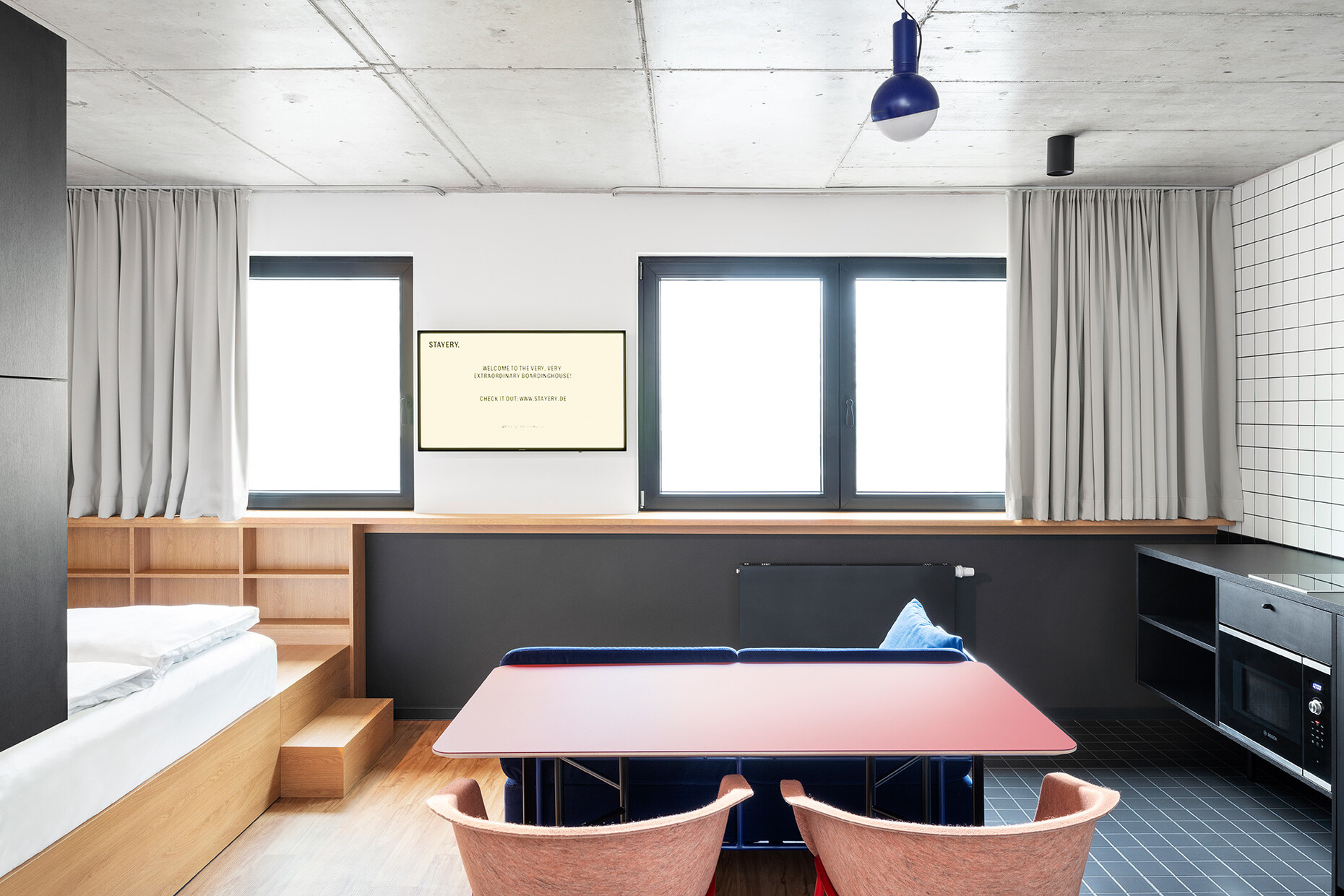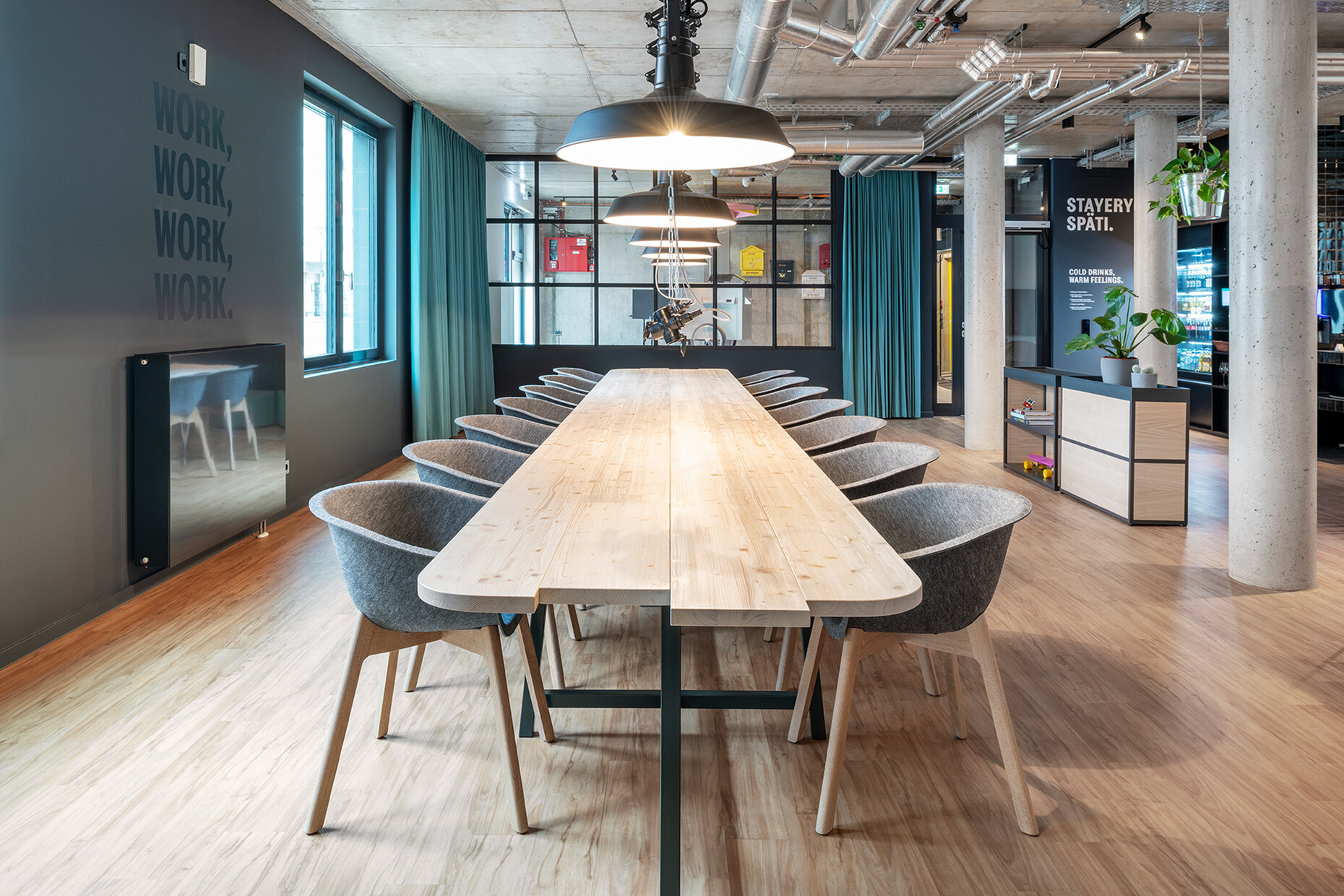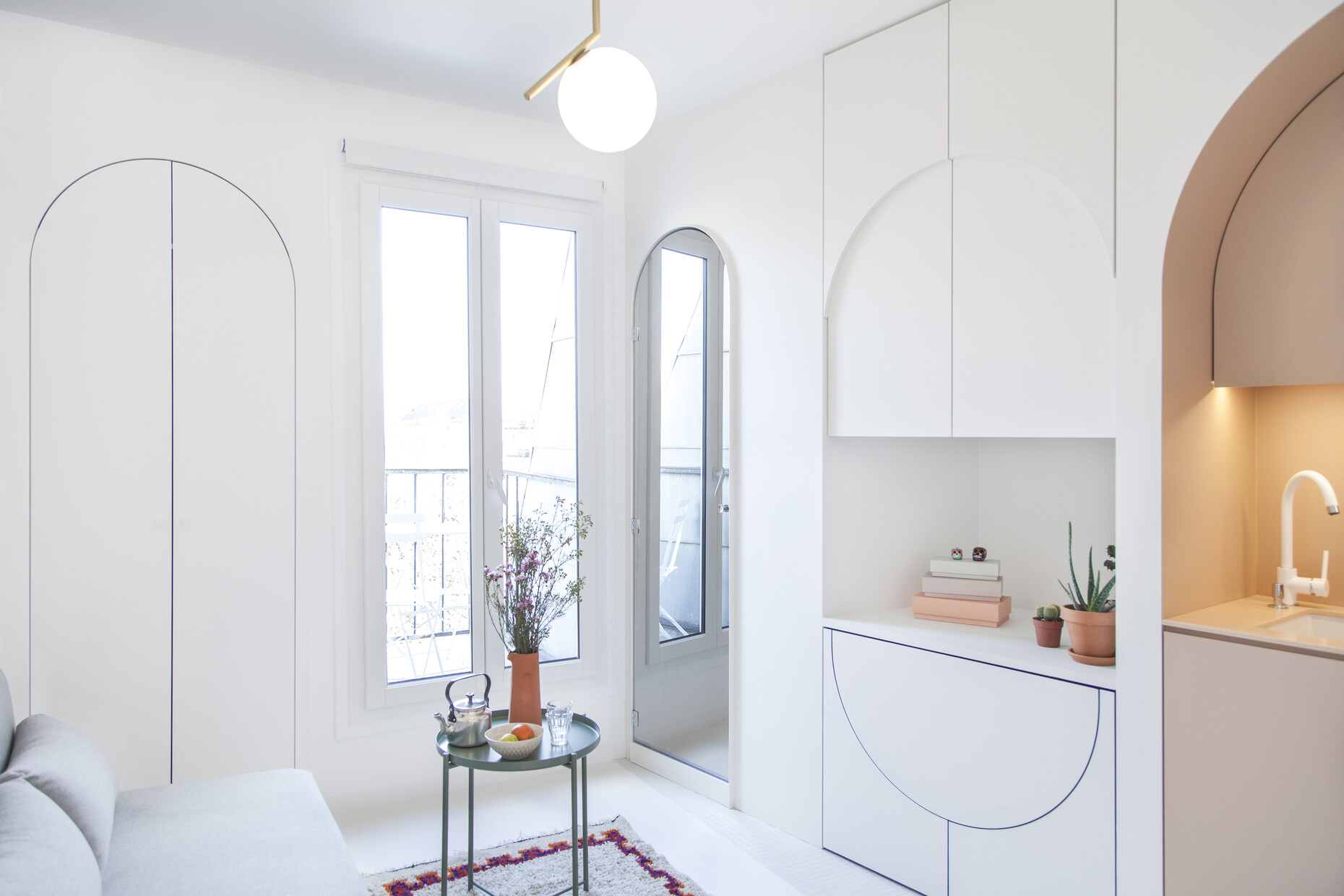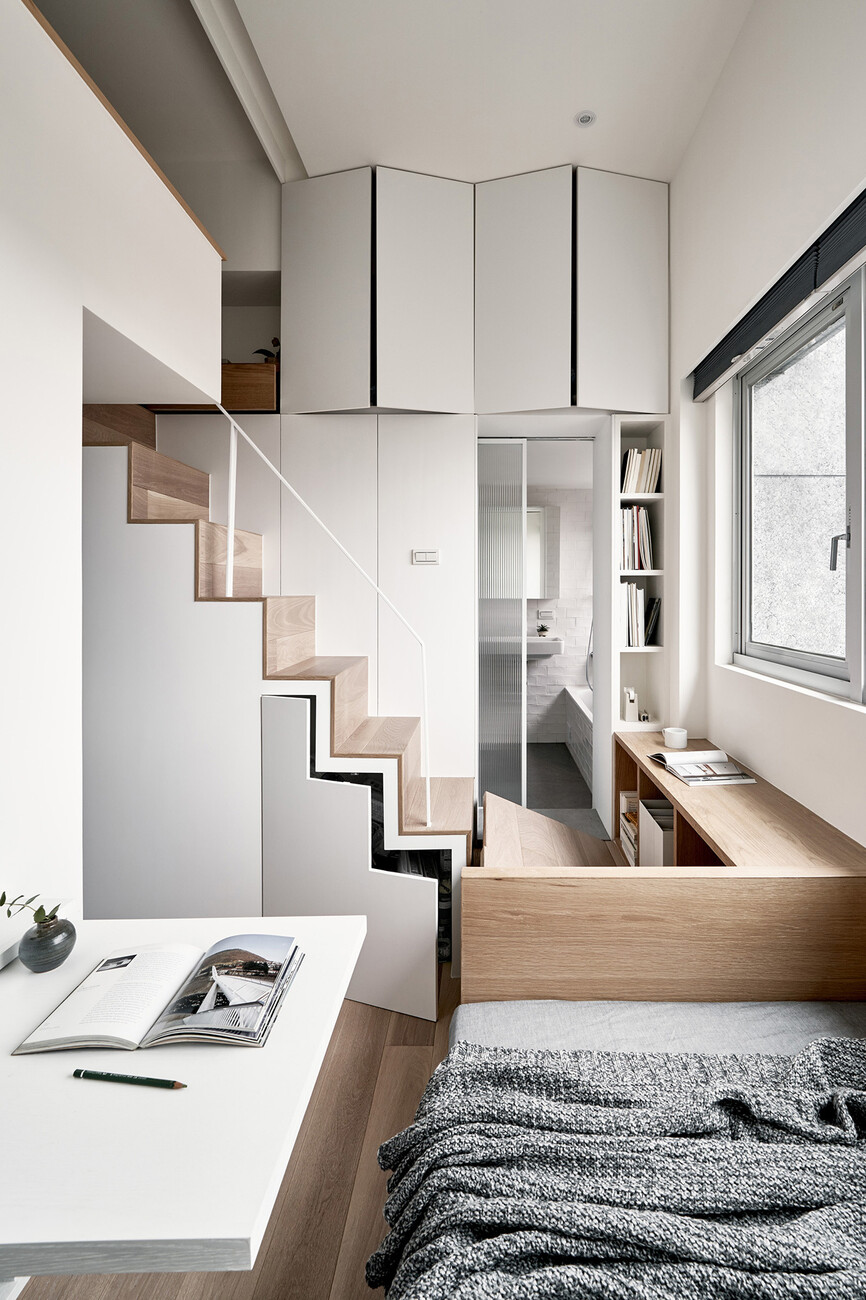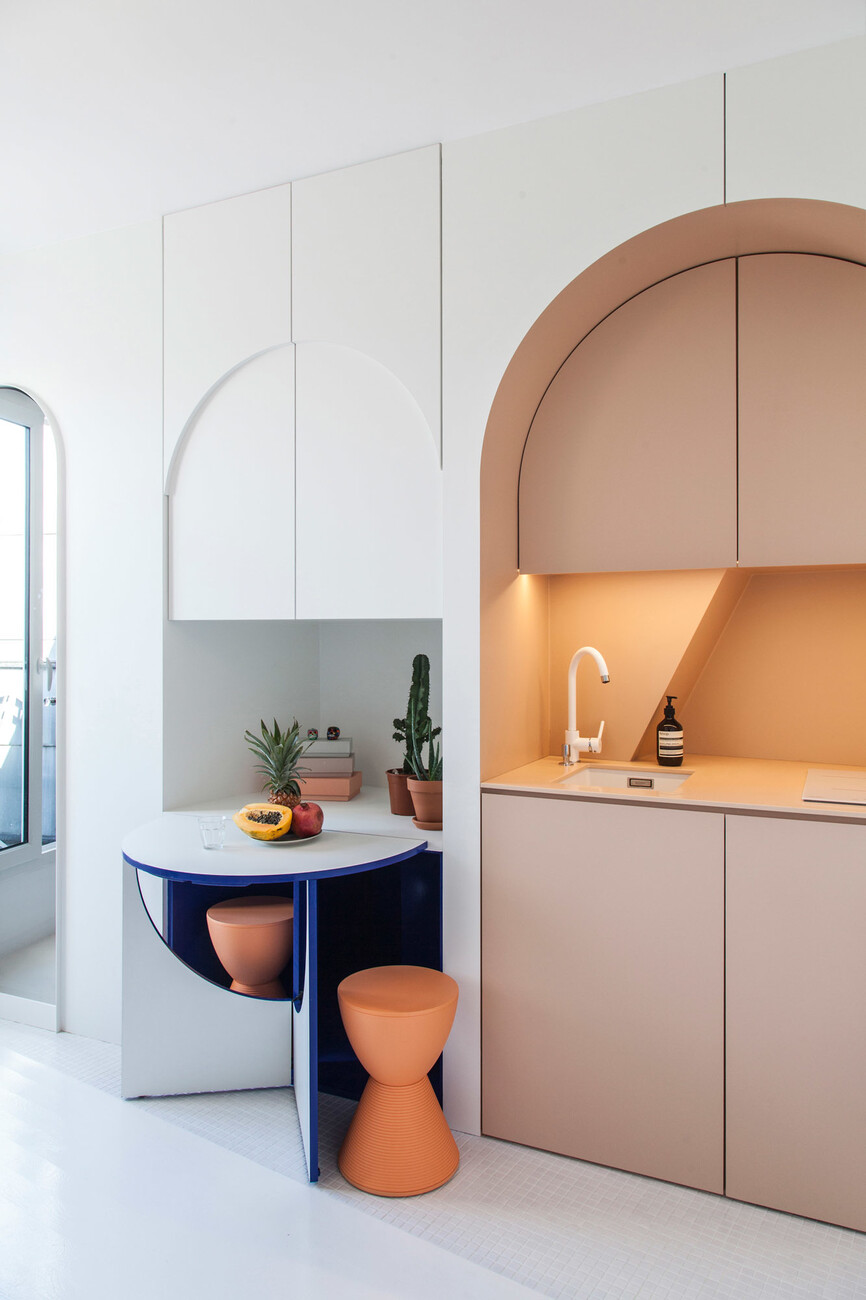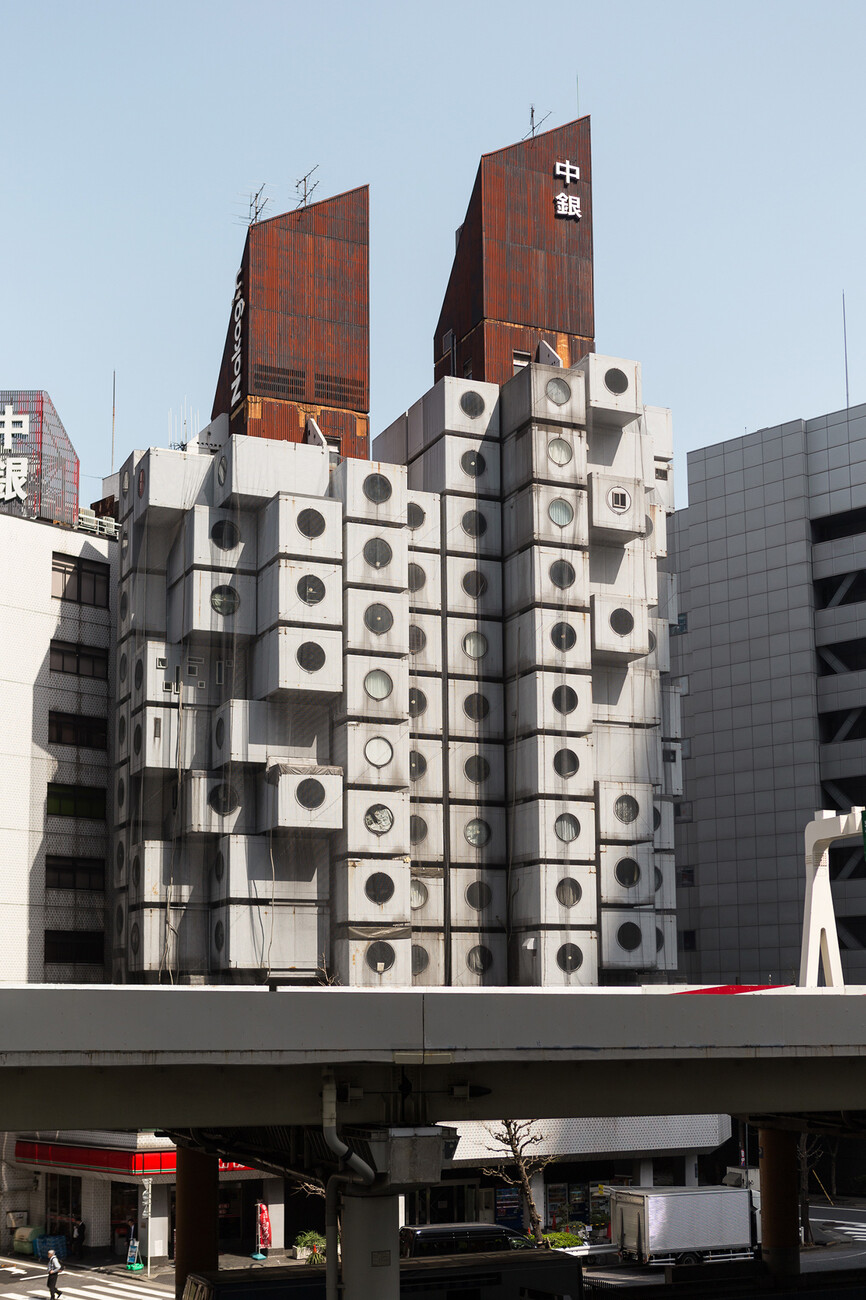MICROLIVING
Comfort in small spaces
Quality of life instead of the daily commute: More and more, professionals are using small downtown luxury apartments as a temporary home. And in small dwellings on wheels, families are also adding another aspect to their dream of a home of their own: flexibility. Furthermore, boasting fittings made of high-end materials, lots of the uniform rooms in student dormitories can hardly be compared to their previously uninviting predecessors. Nowadays making do with little space is no longer necessarily a sign of being one of society’s losers. Voluntarily getting by with just the bare essentials stands less for sacrifice and more for a focus on those things that give life “value” – contentment, comfort, and freedom. On the back of this, society is increasingly turning away from unprincipled, mindless consumerism, is tidying up, and making space. The Japanese tidying coach Marie Kondo, whose call to declutter was initially ridiculed by many, is now an international figure. “Only keep what makes you happy” is her credo, and it is being taken on board – tidying up has long since lost its negative connotation. Kondo’s 2011 book “The Life-Changing Magic of Tidying Up” is a bestseller, and her TV show on Netflix is just as popular. YouTubers and bloggers of all ages, who only a few years ago were still proudly presenting the haul of their latest consumerism frenzy on social media, now prefer to give tips about getting into minimalism and sensible consumerism, film themselves tidying up and winnowing down their own possessions, list the products that they no longer buy and practice perfect organization in a small space. “Less is more” is in.
To some extent this zeitgeist is the result of the current situation. Accommodation in cities is scarce and in demand. For Mario Gross, Vice President Investor Relations at real estate investment management firm Corestate Capital, the market trend towards micro-living was foreseeable early on. Demand among students, young professionals, and mobile members of Generation 50+ has quickly risen, he notes, due as well to the standardization throughout Europe of university courses, more flexible working environments and a metropolitan generation. According to Gross, in the coming years there will be even greater demand for ever more mobile working and studying environments. Dr. Tilman Harlander, professor emeritus and architectural and urban planning sociologist at Stuttgart University, also sees a growing necessity for mobility in society – especially when people are training and during the active years of their career. Given the broad-based target group, which ranges from teenagers to senior citizens, architects, interior designers, and designers are called upon to create attractive micro-apartments which still offer a good quality of life. Flexible fittings and high-end materials, not to mention customized interiors and compact electrical appliances, promise comfort in small spaces that is by no means inferior to an apartment with more living space.
The value of the community
A lack of housing is an on-going phenomenon in cities and was a permanent challenge even during the age of industrialization with its associated rural exodus. After World War I, representatives of New Building such as Bruno Taut, Walter Gropius, and Ludwig Mies van der Rohe searched for realistic solutions to the housing shortage in cities. Even if perfect function was the main focus of their endeavors, they also bore the social environment in mind. “In the best New Building concepts and projects, a striving for affordable small and mini-apartments went hand in hand with plans for generous collective infrastructures. And it is still true today: The smaller one’s individual space and the more densely buildings are constructed, the more important high-quality public spaces and diverse communal facilities become,” Tilman Harlander says. Reducing living to its basic functions otherwise involves the danger of working life being overvalued and a creeping erosion of social interaction in one’s private life. Living must offer an opportunity to develop social relationships, he adds.
By way of example, in the recently opened “Stayery” by Studio Aisslinger in Berlin’s Friedrichshain district, as well as private domains there are also spaces that can be used by all residents. That might have an institutional ring to it, but that is not the case. The “Stayery” describes itself as special serviced apartments, as accommodation that combines the comfort of an apartment with the service of a hotel, which one can rent either for a few days or for a few years. The services offered by the “Stayery” range from one’s own mailbox to the co-working space to food deliveries.
People as a benchmark
In the Far East, densely populated metropolises with rapidly growing economies also began searching for prototypes for living in major cities of the future early on. Kisho Kurakawa’s Nakagin Capsule Tower in Tokyo is an architectural symbol of the experiment involving small living spaces. Built in 1972, it has 140 mobile units configured around a central core. Each capsule measures a mere 4 x 2.5 meters. The fact that, despite their cost effectiveness and sustainability, futuristic concepts failed to catch on was due to the lack of comfort and individualization on the part of the inhabitants, because as much as form follows function, people nonetheless need to be able to design their private environment as they themselves seem fit. At the Salone del Mobile 2018, Mini Living in cooperation with the architecture studio Studiomama showcased an example of the form concepts involving the residents can take: “Mini Living – Built by all” featured four different living zones and a communal area each built on spaces measuring 15 to 20 square meters. Instead of a prefabricated setting, flexible elements make people the focus of attention here, actively involved in the design as they are. Mini Living is currently transforming the idea into micro-living concepts and with “Urban Cabin” is establishing an international network of creative spatial solutions. The first real construction project is currently underway in Shanghai and is set to open in 2019.
Those who want to have a say not just in the multifunctional design of the interiors, but also in the construction of their own small home, will find what they are looking for in so-called “Tiny Houses.” Leonardo di Chiara’s “aVOID” measures just about nine square meters and features wooden fittings. Chairs, bed, table and storage space: All the requisite furnishings are aesthetically concealed behind wooden fronts and when needed can be folded out. Using cutting-edge technology, the serial creation of the small structures is also intended to win out in terms of cost and construction time. Indeed, with a flexible 3D printer the US construction company ICON, among others, is already realizing inhabitable “Tiny Houses” made of cement in less than 24 hours. Those who would like to test living in a mini house in advance can, for example, find an international selection on the Airbnb homesharing platform or take part in guided tours and construction workshops at Tiny House Festivals.
On the back of such diverse approaches, urban living is becoming increasingly flexible. Sealing oneself off in one’s own spacious home is going out of fashion; what count instead are small, functional spaces that can be designed individually for maximum comfort. Tilman Harlander is certain that the current concepts for micro-living with quality of life will meet with interest in the long term as well: “In the medium to long term it will be economically and ecologically imperative to limit individuals’ living spaces.”



